Amazing Adventures Of Örvar-Oddr And Encounter With The Mysterious Ögmundr Flóki
Ellen Lloyd - AncientPages.com - A frightening prophecy, battle with dangerous sea monsters, heroic deeds, and strange encounters with a shape-shifting troll are just some of the many adventures mentioned in the Örvar-Odds saga.
Written in the 13th century by an anonymous Icelander Örvar-Odds Saga relates the life and death of legendary hero Örvar-Oddr, who also appears in the Hervarar saga that tells of wars between the Goths and the Huns during the 4th century.
Hjalmar's parting from Orvar Odd after the fight on Samsö. Painting by Mårten Eskil Winge 1866. Credit: Public Domain
Örvar-Odds Saga is often appreciated by readers of Beowulf, perhaps because of the similarities between these heroic legends. Örvar-Odds Saga is not as famous as Beowulf, but its unique poems recounting the Icelandic hero's life, love, and death deserve to be read by those interested in Norse Sagas. What makes many of these legendary Sagas particularly entertaining "are fantastic stories of the supernatural; often comical and filled with tales of human interaction with monsters, supernatural creatures, and the pagan gods." 1
Örvar-Oddr was the son of Grimr Loðinkinni (Shaggy Cheek), who ruled over most of Halogaland, a province in northern Norway. His grandfather was Ketill Hængrm, a heroic warrior and dragon slayer. He was brave at an early age and most likely inherited his courage from his father and grandfather.
When Örvar-Oddr was a little boy, he was raised by Ingjald of Berurjord, who treated him well, and he enjoyed spending time with her son Asmund. His childhood was good, and he had nothing to complain about, but he was, in some ways, an unusual youngster. For one thing, he liked to play with his specially-made dangerous arrows and did not hesitate to express his opinions, good or bad.
Örvar-Oddr can sometimes be annoying because he is spoiled and used to getting what he wants.
Völva's Prophecy About The Death Of Örvar-Oddr
One day a witch visited their home. Being a völva, she was a female shaman and seer who could reverse a person's fortune according to old Norse beliefs.
The Völva was considered a Seiðr (sometimes anglicized as seidhr, seidh, seidr, seithr, seith, or seid) is an Old Norse term for a type of sorcery that was practiced in Norse society during the Late Scandinavian Iron Age.
A Seiðr could not only foretell the future but also raise storms, journey or battle in animal form, send a nightmare to kill someone by suffocation in his sleep, and cast love spells.
"There were seiðr rituals for divination and clairvoyance; for seeking out the hidden, both in the secrets of the mind and in physical locations; for healing the sick; for bringing good luck; for controlling the weather; for calling game animals and fish.
Importantly, it could also be used for the opposite of these things – to curse an individual or an enterprise; to blight the land and make it barren; to induce illness; to tell false futures and thus to set their recipients on a road to disaster; to injure, maim and kill, in domestic disputes and especially in battle." 2
The völva who met Örvar-Oddr was certainly not treated with the respect she had expected. She was insulted by him and gave him a prophecy he refused to believe. She said Örvar-Oddr would be killed by his horse Faxi, at the place where he was born.
Eager to prove the prophecy wrong, Örvar-Oddr and his step-brother decided to go on a Viking voyage and become heroes. To ensure the prophecy is not fulfilled, Örvar-Oddr killed his horse Faxi and buried it deep in the ground before leaving home.
Örvar-Oddr's Voyages And Adventures
Örvar-Oddr sailed to distant places where he plundered as a Viking warrior should do to gain glory and fame.
He visited Finnmark, Bjarmaland, Holmgård, Constantinople, and Jotunheim, where he fought against mighty Viking warriors and strong giants.
In Lapland, he acquired a magic bow-and-arrows called Gusir's Gifts. These supernatural arrows never missed their target and always returned to the owner.
Örvar-Oddr suffered a significant loss when Asmund was killed in Ireland. While seeking revenge for the murder of his step-brother, he encountered a woman in Ireland who gave him a magic shirt. He married her, and before their child was born, he left her eager to go on new adventures. On another journey, he encountered the Swedish champion Hjalmar with whom he fought, but later, the men became friends and even entered a sworn brotherhood.
Örvar-Oddr's wish to become famous was fulfilled, and people talked about his heroic deeds in many places. In time he became a legendary hero and warrior.
Örvar-Oddr's Meeting With The Mysterious Troll Ögmundr Flóki
Örvar-Oddr met many unusual individuals during his journeys, but none was as strange as the mysterious troll Ögmundr Flóki.
In many old Scandinavian folktales, trolls are giant, much more robust than average man, and possess the secret knowledge of magic. Örvar-Oddr was a different troll in many aspects.
Örvar-Oddr encountered hideous sea monsters. Credit: Adobe Stock - Daniel
Ögmundr Flóki, aka Ögmundr Eyþjófsbani was a master of illusions. When Örvar-Oddr sought vengeance against Ögmundr Flóki for the murder of his blood-brother Thord Prow-Gleam, he and his crew headed toward a fjord in Helluland. During this journey, they encountered horrible sea monsters called Sea-Reek and Heather-Back that resembled islands.
"The Sea-Reek is the biggest monster in the whole ocean. It swallows men and ships, and whales too, and anything else around. It stays underwater for days, then it puts up its mouth and nostrils, and when it does, it never stays on the surface for less than one tide." 3
Örvar-Oddr's crew managed to escape the sea monsters who Ögmundr Flóki using magic, had sent to kill the arrivals.
One of the most fascinating individuals in the Saga of Örvar-Odd is Ögmundr Flóki who was said to be the "the greatest troll and ogre that has emerged in the northern hemisphere." 4
Ögmundr Flóki studied witchcraft and illusions from an early age. Men believed that he should be called a spirit than a human. It is also said that the Permians worshipped and trolled him so that he became unlike any human being. Occasionally he behaved like a draugr, but whether he was dead or not is open to discussion.
According to the Örvar-Odd Saga, in the beginning, Ögmundr Flóki was human but underwent some ritual or at least procedure, referred to as trolling ("trylla").
Ögmundr Flóki was skilled in magic and a master of illusions. Credit: Adobe Stock - Digital Storm
During this unusual event, he "seems to have shifted him from one state of being to another. There is no mention of him dying in the process, but some such transformation seems nevertheless to have taken place since the saga indicates that he cannot be considered a human any longer and also that he cannot die." 4
Ögmundr later admits that he has become inhuman and states that he would be dead if it were in his nature.
Ögmundr is said to be black and blue "a description used of many Icelandic ghosts, but he is never directly described using the words scholars commonly associate with ghosts in the sagas, although there is mention of "jǫtnar," "fjandr," and "troll" (giants, devils, and trolls) in the different versions of this saga.
Even though Ögmundr is referred to as a spirit ("andi") but not a ghost, there is strong evidence which suggests he should be counted amongst the undead.
Something of a medieval Frankenstein creature, having been re-animated like a revenant, it is stated that Ögmundr can no longer die — perhaps precisely because he can no longer be counted among the living. It is left up to the audience of Örvar-Odds saga to choose how they would like to refer to Ögmundr: as a devil, demon, troll, spirit, or ghost or perhaps all of the above in chorus." 4
Did Örvar-Odd Meet Odin?
Another interesting event in the Saga is Örvar-Odd's meeting with a man dressed in a blue-striped cloak. Sitting under an oak tree, the stranger introduced himself, saying people called him Red Beard. The stranger tried to conceal his face, but Örvar-Odd could see he had a long beard and a large mustache.
God Odin often used disguises to gain knowledge and meet new people, and it would seem that Örvar-Odd met the greatest of all Norse gods, Odin.
Örvar-Odd Died Like The Völva Prophecied
Perhaps escaping fate is impossible. Tired from all his adventures and visits to distant lands, Örvar-Odd decided to return home. Walking over the grave of Faxi, he mocked the old prophecy and tripped over a horse's skull from which a snake appeared. The snake bit him, and he died as the Völva had predicted.
As previously mentioned, the Saga of Örvar-Odd has not gained as much fame as Beowulf. Nevertheless, readers looking for Icelandic adventures, heroic deeds, encounters with supernatural phenomena, and unusual beings will enjoy this literary work.
Written by - Ellen Lloyd – AncientPages.com
Copyright © AncientPages.com All rights reserved. This material may not be published, broadcast, rewritten or redistributed in whole or part without the express written permission of AncientPages.com
Expand for references- Jacobsen, H. F. L. (2014). The Death Songs of Örvar-Odds saga. In I. Grifoll, J. Acebrón , & F. Sabaté (Eds.), Cartografies del l’ànima: Identitat, memòria i escriptura (pp. 231-244). (Verum et Pulchrum Medium Aevum ; Vol. 7).
- Neil Price - Viking Way: Religion and War in Late Iron Age Scandinavia
- Boer Richard Constant - Örvar-Odds Saga
- Ármann Jakobsson - The Troll Inside You
- Michael Fox - Following the Formula in Beowulf, Örvar-Odds saga, and Tolkien
More From Ancient Pages
-
 Hidden Prophecies Inside The Great Pyramid Of Giza Discovered By Scientists
Featured Stories | Jun 21, 2017
Hidden Prophecies Inside The Great Pyramid Of Giza Discovered By Scientists
Featured Stories | Jun 21, 2017 -
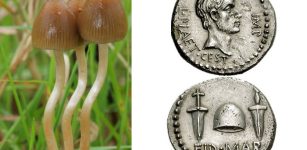 Strange Tale How The Liberty Cap Mushroom Got Its Name Starts In Ancient Rome
Featured Stories | Sep 3, 2023
Strange Tale How The Liberty Cap Mushroom Got Its Name Starts In Ancient Rome
Featured Stories | Sep 3, 2023 -
 Ancient Intriguing Sao People: “Men From Another Time” – One Of The Oldest Civilizations Of Central Africa
Featured Stories | Sep 28, 2015
Ancient Intriguing Sao People: “Men From Another Time” – One Of The Oldest Civilizations Of Central Africa
Featured Stories | Sep 28, 2015 -
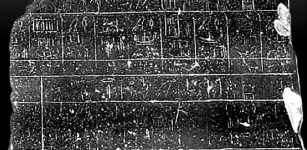 Palermo Stone: One Of The Earliest History Records Of Ancient Egypt
Artifacts | Apr 15, 2016
Palermo Stone: One Of The Earliest History Records Of Ancient Egypt
Artifacts | Apr 15, 2016 -
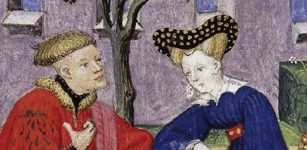 Why Was Lovesickness A Feared Disease During The Middle Ages?
Ancient History Facts | Feb 8, 2018
Why Was Lovesickness A Feared Disease During The Middle Ages?
Ancient History Facts | Feb 8, 2018 -
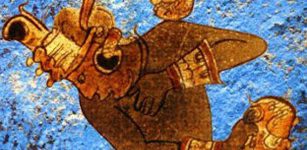 Mystery Of The Maya Blue Pigment And Its Unusual Chemical Composition
Ancient History Facts | Mar 23, 2016
Mystery Of The Maya Blue Pigment And Its Unusual Chemical Composition
Ancient History Facts | Mar 23, 2016 -
 God Dagda – A Powerful Leader Of The Tuatha De Danann In Celtic Mythology
Celtic Mythology | May 30, 2020
God Dagda – A Powerful Leader Of The Tuatha De Danann In Celtic Mythology
Celtic Mythology | May 30, 2020 -
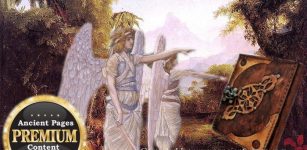 Precious Lost Ancient Book Of Wisdom Could Solve Biblical Mysteries
Artifacts | Nov 26, 2018
Precious Lost Ancient Book Of Wisdom Could Solve Biblical Mysteries
Artifacts | Nov 26, 2018 -
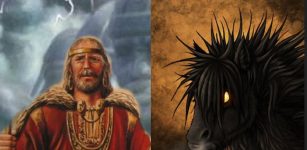 Pooka: Solitary Spirit And Not Entirely Benevolent Prankster In Irish Folklore
Celtic Mythology | Jun 4, 2016
Pooka: Solitary Spirit And Not Entirely Benevolent Prankster In Irish Folklore
Celtic Mythology | Jun 4, 2016 -
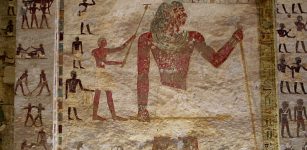 Rock-Cut Tombs Of Beni Hasan With Spells, Prayers To Osiris And Anubis And Map To Underworld
Civilizations | Feb 3, 2017
Rock-Cut Tombs Of Beni Hasan With Spells, Prayers To Osiris And Anubis And Map To Underworld
Civilizations | Feb 3, 2017 -
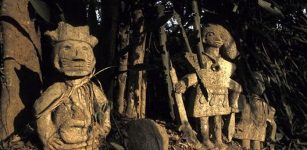 Mystery Of Sacred Groves Of Oshogbo And Its Remarkable Ancient Figures
Featured Stories | Nov 25, 2023
Mystery Of Sacred Groves Of Oshogbo And Its Remarkable Ancient Figures
Featured Stories | Nov 25, 2023 -
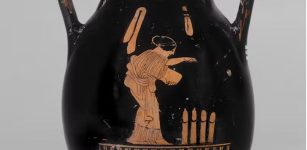 The Long And Satisfying 28,000-Year History Of The Dildo
Featured Stories | Feb 27, 2023
The Long And Satisfying 28,000-Year History Of The Dildo
Featured Stories | Feb 27, 2023 -
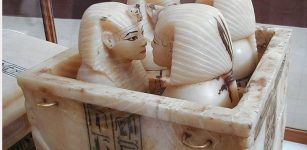 Canopic Jars: Funerary Tradition Of Ancient Egyptians And Their Beliefs In Afterlife
Ancient Traditions And Customs | Jun 23, 2017
Canopic Jars: Funerary Tradition Of Ancient Egyptians And Their Beliefs In Afterlife
Ancient Traditions And Customs | Jun 23, 2017 -
 Ale Conner: Unpleasant And Dangerous Profession In Medieval England
Ancient History Facts | Oct 19, 2017
Ale Conner: Unpleasant And Dangerous Profession In Medieval England
Ancient History Facts | Oct 19, 2017 -
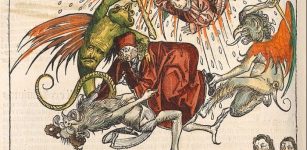 Simon Magus ‘The Magician’ Who Faked Death And Resurrection
Featured Stories | Feb 17, 2022
Simon Magus ‘The Magician’ Who Faked Death And Resurrection
Featured Stories | Feb 17, 2022 -
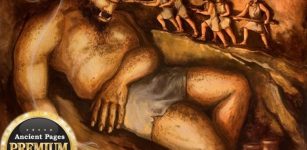 Hidden Giant Tombs In Armenia Remain An Ancient Mystery
Featured Stories | Nov 9, 2017
Hidden Giant Tombs In Armenia Remain An Ancient Mystery
Featured Stories | Nov 9, 2017 -
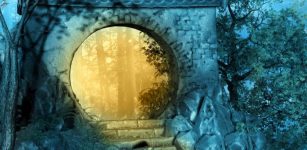 Golosov Ravine – Mysterious Time-Warping Mist Causing Unexplained Disappearances And The Ancient Shrine Of God Veles
Featured Stories | Jul 3, 2021
Golosov Ravine – Mysterious Time-Warping Mist Causing Unexplained Disappearances And The Ancient Shrine Of God Veles
Featured Stories | Jul 3, 2021 -
 Gengen Wer – Goose God Who Guarded The Celestial Egg Containing The Life Force In Egyptian Beliefs
Featured Stories | Apr 22, 2021
Gengen Wer – Goose God Who Guarded The Celestial Egg Containing The Life Force In Egyptian Beliefs
Featured Stories | Apr 22, 2021 -
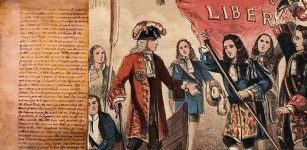 Bill Of Rights 1689 – Enormous Historical Moment In English History
Ancient History Facts | May 6, 2019
Bill Of Rights 1689 – Enormous Historical Moment In English History
Ancient History Facts | May 6, 2019 -
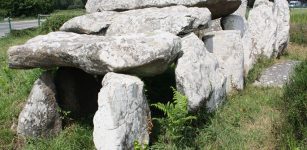 Mysterious Megalithic Stones Of Carnac, France – An Unsolved Neolithic Enigma
Civilizations | Oct 12, 2018
Mysterious Megalithic Stones Of Carnac, France – An Unsolved Neolithic Enigma
Civilizations | Oct 12, 2018



